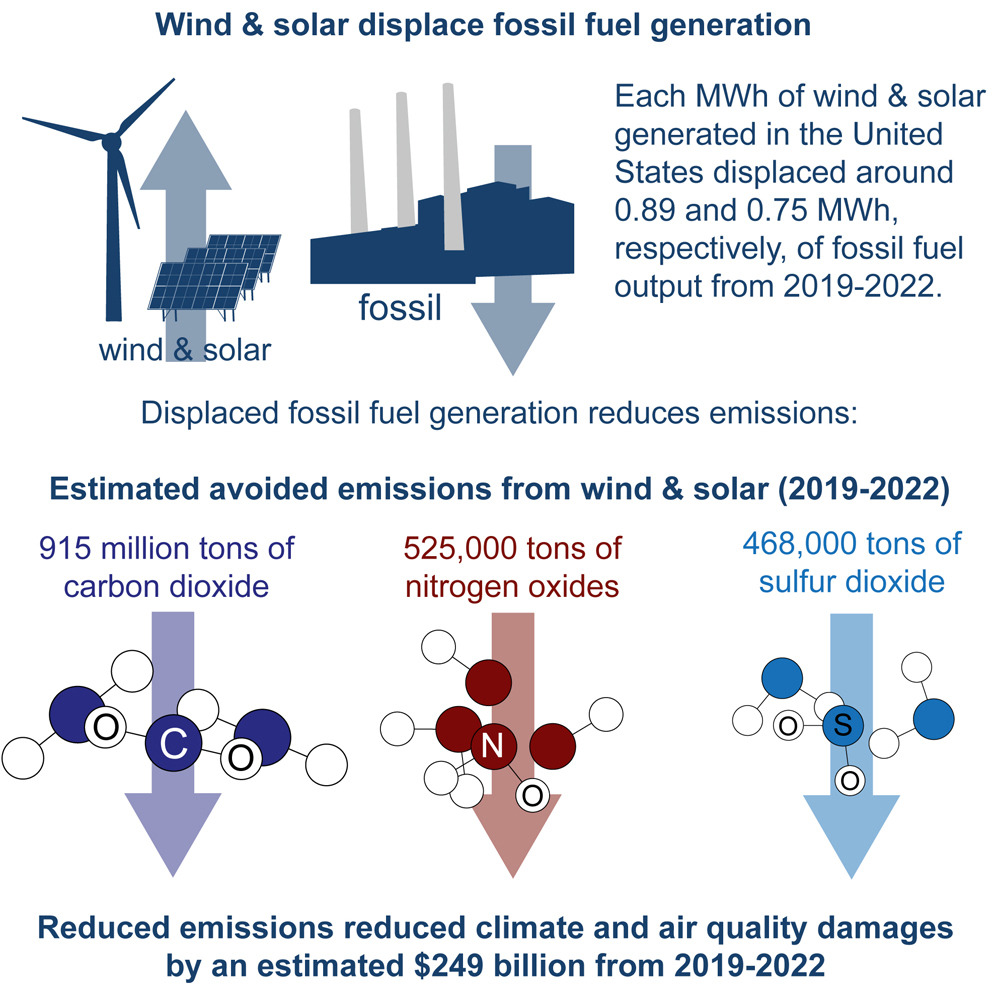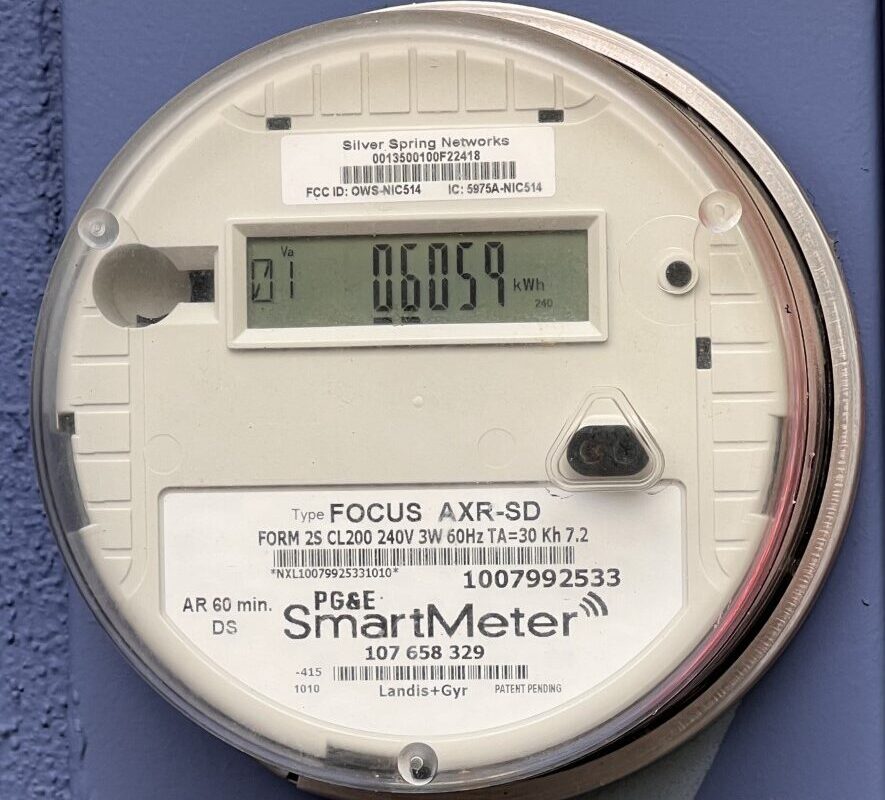Researchers at Lawrence Berkeley National Laboratory have developed a new methodology for estimating the value of climate and air quality benefits from wind and solar generation. A report describing the results of an analysis of data from 2019 to 2022 using the methodology concludes that wind and solar generation provided $249 billion dollars of climate and air quality health benefits over that period.

Renewable energy advocates argue that the levelized cost of electricity (LCOE) does not tell the whole story when comparing the economics of wind and solar generation with fossil-fuel sources. Emissions from natural gas- and coal-fired plants in the form of carbon dioxide (CO2), sulfur dioxide (SO2), and nitrogen oxides (NOx) affect the climate and air quality in ways that should be accounted for in the evaluation of renewable energy’s benefits.
The researchers draw on publicly available electricity generation data and break the continental U.S. into ten regions in which wind or solar supplied at least 3% of electricity demand. An 11th region centered on Tennessee was excluded because the thresholds weren’t met. The methodology measures daily generation from appropriate sources (solar, wind, gas and coal) by region and a yearly average of emissions by region. The reason for averaging emissions is that there is generally a significant delay in the availability of daily emissions data.
According to the report, in 2022 the generation-weighted average across all regions in shows that 1.0 MWh of wind generation offsets 0.89 MWh of fossil generation (0.29 MWh of coal generation and 0.60 MWh of gas generation); and that 1.0 MWh of solar generation offsets 0.76 MWh of fossil generation (0.14 MWh of coal generation and 0.62 MWh of gas generation).
The offsets are not one-to-one because of transmission loss from solar and wind sources, which tend to be located further from consumers than fossil-fuel sources and curtailment issues. Also because some generation is absorbed by battery storage, which was not factored into the analysis method. Furthermore, other sources such as nuclear and hydroelectric typically are not displaced by solar and wind generation and so were not factored in, the researchers said.
In order to determine the dollar value of climate and air-quality benefits resulting from lowered emissions, the researchers turned to published reports in scientific journals: a 2022 article in Nature for determining the social cost of carbon; and a 2019 article in Environmental Research Letters that evaluated the social costs of pollutants such as SO2 and NOx.
With the generation offsets and social costs of emissions in hand, the Berkeley Lab researchers were able to calculate the health benefits of renewable generation. The researchers found the 435.6 TWh of wind generation produced in the U.S. during 2022 prevented 228,798 kilotons (KT) of CO2, 116 KT of SO2 and 129 KT of NOx emissions, resulting in total health benefits worth $62.4 billion. Solar provided 116.1 TWh of generation, preventing 45,729 KT of CO2, 15 KT of SO2 and 28 KT of NOx emissions, yielding $11.6 billion in health benefits.
According to the researchers, their new methodology shows the benefits of renewable generation are much higher than have been previously estimated and could help make a strong case for increasing wind and solar penetration in the U.S. Moreover, the analysis tools could be applied anywhere sufficient data are available. “The relatively simple data needed for our approach increases the possibility that it could be adapted to other regions around the world,” the researchers said.
This content is protected by copyright and may not be reused. If you want to cooperate with us and would like to reuse some of our content, please contact: editors@pv-magazine.com.









By submitting this form you agree to pv magazine using your data for the purposes of publishing your comment.
Your personal data will only be disclosed or otherwise transmitted to third parties for the purposes of spam filtering or if this is necessary for technical maintenance of the website. Any other transfer to third parties will not take place unless this is justified on the basis of applicable data protection regulations or if pv magazine is legally obliged to do so.
You may revoke this consent at any time with effect for the future, in which case your personal data will be deleted immediately. Otherwise, your data will be deleted if pv magazine has processed your request or the purpose of data storage is fulfilled.
Further information on data privacy can be found in our Data Protection Policy.